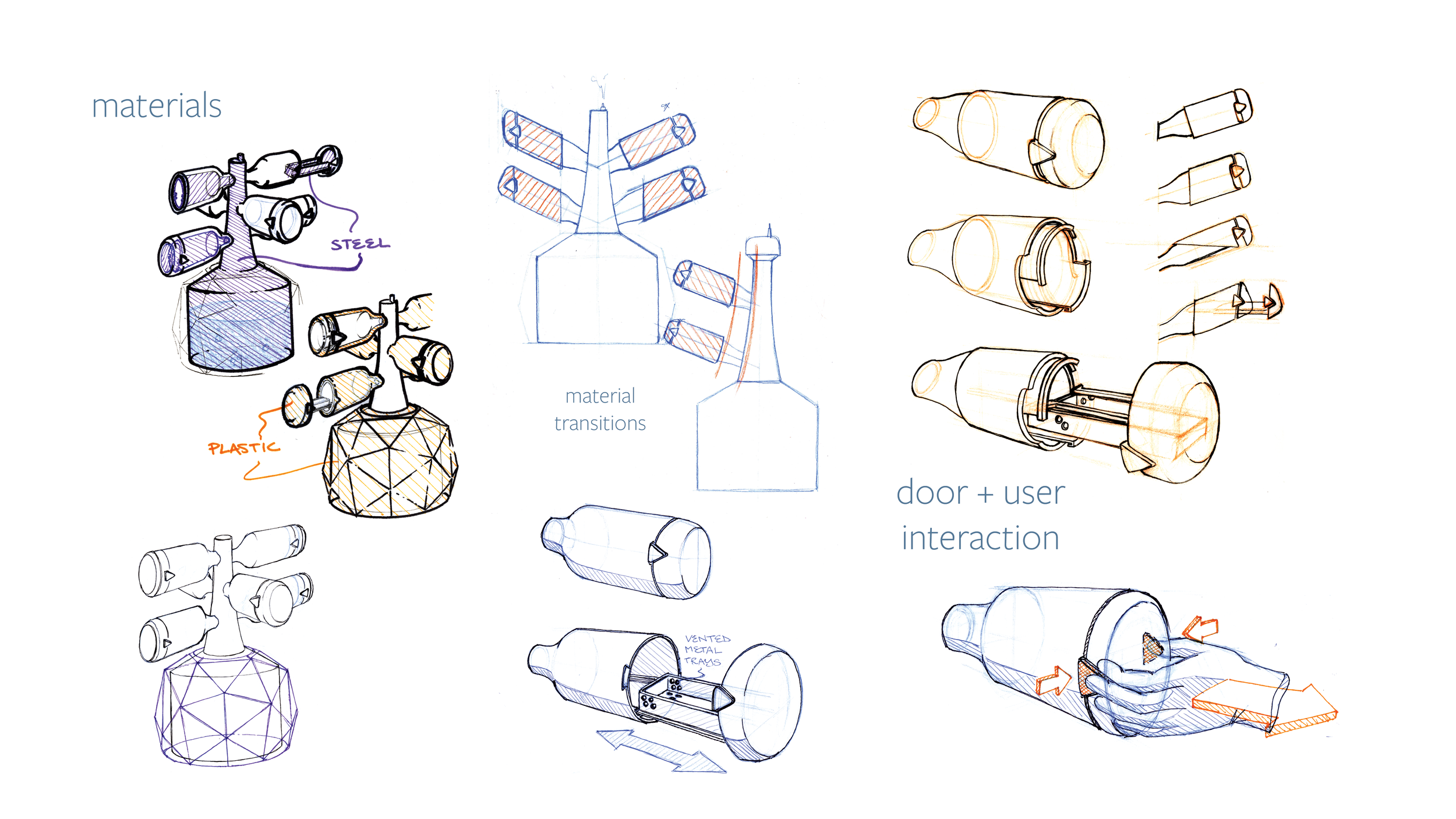
PROblem
skills
Obsolete medical devices contribute massively to our earth’s growing levels of toxic waste. One major cause of this is the donation system which brings commercial healthcare tools from first-world suppliers to lower-income countries for secondhand use.
Numerous flaws in this donation supply chain can be identified as reasons for excessive waste. In fact, many contributing issues occur before items are even donated.
SolidWorks
Keyshot
Illustrator
Photoshop
Rapid Prototyping
Use research and interviews with professionals to back up design choices
Design for a closed-loop production system, considering materials and processes to further minimize waste
Generate prototypes of later concepts to gather feedback and make improvements regarding usability, ergonomics and function
RESEARCH
Medical Device Donations
Prominent Barriers
1
2
3
4
What challenges do low-income countries face when acquiring and maintaining functional medical equipment?
What are the issues embedded in the current medical device donation system that result in excessive waste?
What causes devices to become more burdensome than helpful once they arrive at lower-income hospitals?
Mismatches between what is needed and what is received
Equipment arrives with wrong/missing parts, manuals/instructions missing or in incomprehensible languages, or requires power sources that are incompatible with hospital’s outlets, voltage capacity, etc.
Lack of adequate infrastructure, financing, and trained staff required for long-term maintenance
Often, there is a lack of trained staff who can operate/maintain/repair donated items, putting them out of service quicker.
Trouble disposing of unusable equipment
Unsustainable donations become waste, but lower-income healthcare centers often don’t have an established process or dedicated funding for proper disposal. The overflow of unusable items becomes a burden, and devices pile up within the halls and patient rooms, litter the streets and villages, or become toys for children.
Limited access to information around the world leaves donors unsure of which contributions are helpful
Insufficient information on the global supply and demand for donations, including types and countries involved, leaves everyone involved uncertain of their role and impact in the donation system.
Statistics of Medical Device Donation
Autoclaves
Inventory data from 15 developing countries spanning the Americas, Africa, and Southeast Asia over the years 1986–2010 shows that tabletop autoclaves and other sterilizing machines tend to be out-of-service at one of the highest rates.
This data accounts for 112,040 pieces of medical equipment, 93% from the developing world.
Ideal Donation System Based on Existing Barriers
What is an autoclave?
Comparable to a pressure cooker, or a high-intensity dishwasher, an autoclave generates enough pressure and heat to create steam, which is then used to sanitize contaminated surgical instruments and other biohazardous tools for reuse in a medical setting.
Design concepts
Mood Boards
UX Considerations
System Basics
IDEATION
MOCK-UPS
refinement



Design Solution
Design Solution
Final Concept renders
Rapid prototype
Scaled 3D Model




































